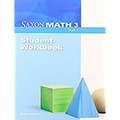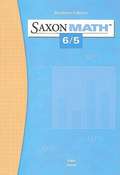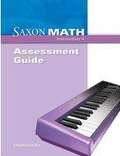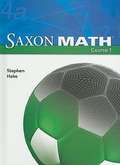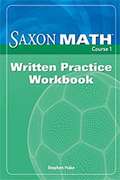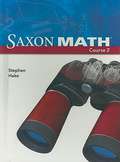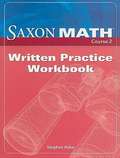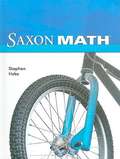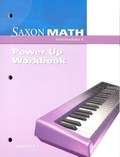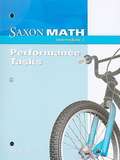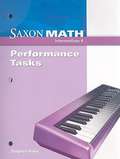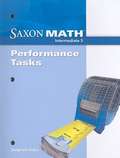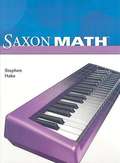- Table View
- List View
Saxon Matemáticas K, Cuaderno de trabajo del estudiante, Parte 2
by Nancy LarsonNIMAC-sourced textbook
Saxon Math 3, Student Workbook, Part 1
by Nancy Larson Sharon Molster Orio Jeanne Honore MillerNIMAC-sourced textbook
Saxon Math 6/5
by Stephen Hake John SaxonThis book is made up of daily lessons and investigations. Each lesson has four parts. The first part is a Warm-Up that includes practice of basic facts and mental math. The second part of the lesson introduces a new mathematical concept and presents examples that use the concept. Third one, the Lesson Practice helps solve problems involving the new concept. The final part is the Mixed Practice which reviews previously taught concepts and solving the problems set gives much benefit to students.
Saxon Math Course 1
by Stephan HakeSaxon Math Course 1 integrates and distributes traditional units, giving students time to learn and practice skills throughout the year, master content, and develop higher-order thinking.
Saxon Math Course 1: Written Practice Workbook (Grade #6)
by SaxonWorking through the Written Practice problems will refresh the student's memory of topics they have previously learned. Student will deepen their understanding of concepts,and will learn to efficiently shift gears between different types of problems, and see how different math topics are related.
Saxon Math Course 2: Written Practice Workbook
by Stephen Hake Saxon Publishers Inc. StaffThe single most important part of the Saxon Math program is Written Practice. Working through the Written Practice problems will refresh your memory of topics previously learned. You will deepen your understanding of concepts, you will learn to efficiently shift gears between different types of problems, and you will see how different math topics are related.
Saxon Math Intermediate (Grade #3)
by Saxon Publishers HakeSaxon Math Intermediate 3–5 is a textbook-based comprehensive series that incorporates instructional materials, activities, and technology to support mastery of the Common Core State Standards.
Saxon Math Student Edition: Course 2 2018
by Houghton Mifflin Harcourt*This textbook has been transcribed in UEB, formatted according to Braille textbook formats, proofread and corrected.




